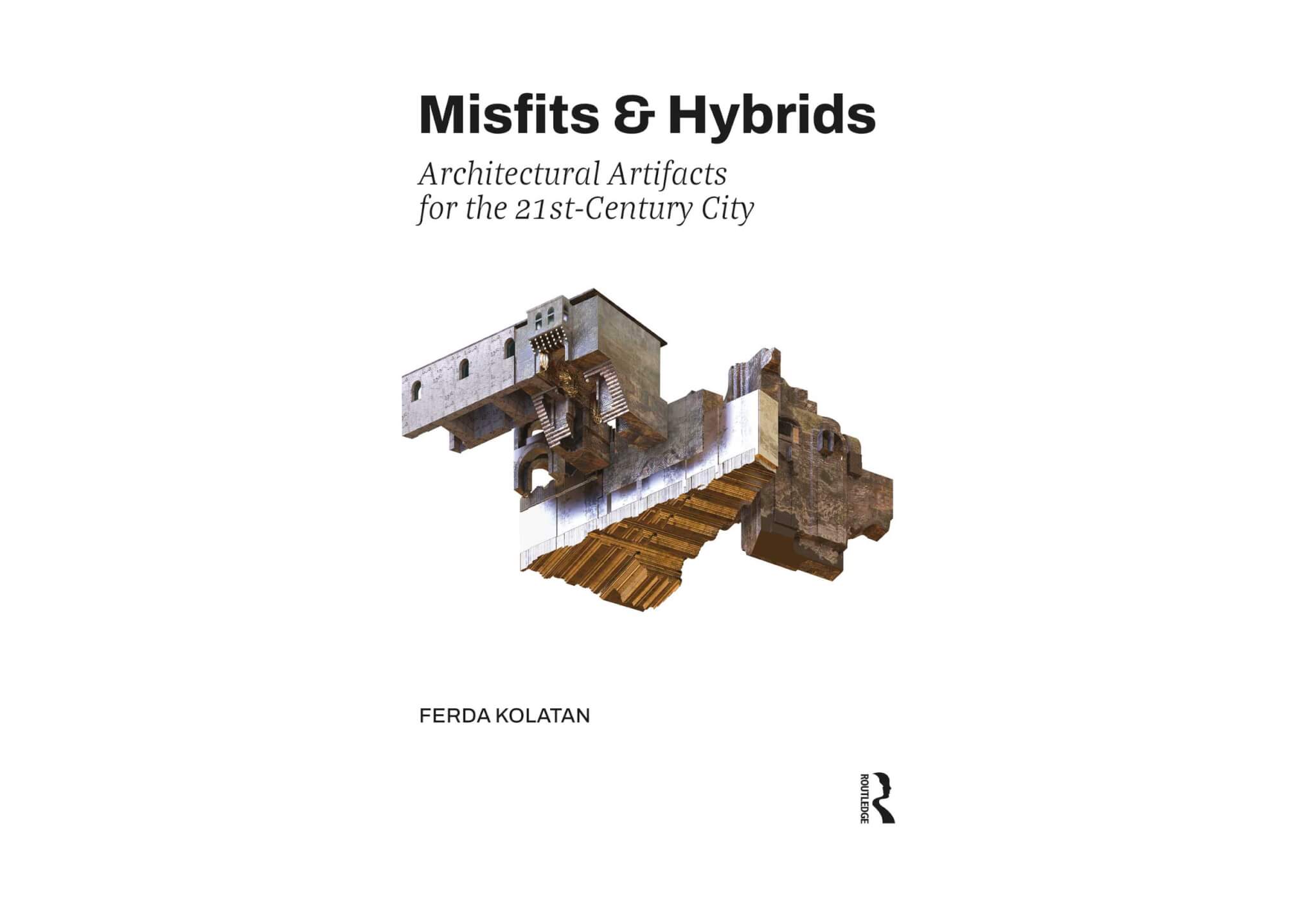Misfits & Hybrids: Architectural Artifacts for the 21st-Century City by Ferda Kolatan | Routledge | $38.24
There is a divisive and clear rift in architectural discourse today, one that needs to be healed. On one hand, there are those who only seem to care about the larger societal questions that architecture can offer a lens into. These often veer into the territory of simply reminding us of injustices around land-use and urban planning, leaving architecture out of the final equation. On the other extreme are those who claim disciplinary autonomy and fuss about details, corners, fenestrations, etc. They paradoxically defend the profession in a way that silos it so far into an aficionado’s corner that it can’t really function as a serious factor in how we make society.
In the middle is where the good stuff has always been, of course. Ferda Kolatan’s recent book, Misfits & Hybrids: Architectural Artifacts for the 21st-Century City, is a refreshing and contemporary reminder of architecture’s potential to act simultaneously as both culture and artifice. It lays out several strategies and techniques for realizing an architecture that can “express diverse subjects such as history, culture, politics, aesthetics, and the environment.” Robert Venturi and Denise Scott Brown, who Kolatan cites several times, offered their preference for “Expression over expressionism,” which connotes an architecture that expresses something outside of itself or architectural language.
For Kolatan, “odd material accretions” are key to unlocking the city’s layered histories and unexpected moments of change, difference, and plurality that make it so vibrant. Kolatan looks to philosophers like Alain Badiou, Bruno Latour, and Donna Haraway to make sense of misfits and hybrids as liminal spaces which can be productive for new design experimentation. Misfits and hybrids, Kolatan attests, can offer new forms that operate within the systems of regulation that quietly govern the forms of the city—familiar and unfamiliar.
Adjacencies, Overlaps, and Intersections
Graham Harman, in his essay Undermining, Overmining, and Duomining: A Critique, outlines two concepts that parallel the two extremes of architectural discourse today. First, “overmining” is putting too much emphasis on the social constructs of an object, or its relationship to other objects. Second, “undermining” is claiming that an object is merely the material it is made of, such as wood. Both strategies are reductive, and do not accurately convey the object. A third way of understanding is needed to understand objects away from these types of reductive analysis.
Misfits and hybrids offer this third way. They are those urban moments—adjacencies, overlaps, and intersections—where uneasy and unexpected relationships between these parts produce new and unfamiliar tensions. Examples of misfits are electrical cables interwoven with floral decoration on a Beaux-Arts facade, or a house that abuts a massive concrete bridge foundation. Kolatan posits that all of these incongruous parts can be considered non-hierarchical, including sidewalks, houses, doorknobs, satellite dishes, and more. This leaves a kit of parts for endless new combinations within the otherwise strict regulatory planning of the city’s urban form. They offer particular opportunities for adaptive reuse, where new architecture is co-mingled with the old in a process of societal and physical reinvention that produces these types of misfits almost automatically.
Hybrids are new objects formed by combining, fusing, or extracting two or more objects as referents. These new objects take on the role of artifact, or real fiction, as Kolatan posits. The new objects contain unexpected combinations. In other disciplines and fields, the hybrid manifests as the remix in music, or the monster in literature. Figures like the centaur or the sphinx are fictions born from combining real “objects.” Hybrids are particularly compatible with the digital project, according to Kolatan, because the digital can easily make a whole object out of constituent parts, in a seamless combination that is devoid of hierarchies.
Extending Harman’s calls for that third way of understanding an object, Kolatan’s conception of both misfits and hybrids, can point us toward a new understanding of architecture as fragments of buildings as their environments become reconstituted as new “object-to-object” relationships, a non-hierarchical way of redefining the part-to-whole, and ostensibly the relationships between objects. The book is at its best when it examines these phenomena as architectural solutions, with more developed sites and programs, and not just as chunks of material or parts of a building. Overall, it provides a timely but not trendy take on our current discourses and the challenges we face to bring together the formal and social once again, lest we lose the discipline for good.
These techniques are not a universal design language, but rather a set of criteria to look for in the urban landscape. These underappreciated moments offer new language and possibilities if we are looking. Hybrids and misfits are as perhaps more a new way of seeing as they are a new prescriptive way of designing. They appear at many scales and in all different places around the world. For today’s stuck and bifurcated discourse, they offer a solution that can please both sides: they contain physical traces of the laws and regulations that underpin the ethics of design and cities today. Go ahead, have a look.
Matt Shaw is a New York–based critic and author of American Modern: Architecture, Community, Columbus, Indiana.

